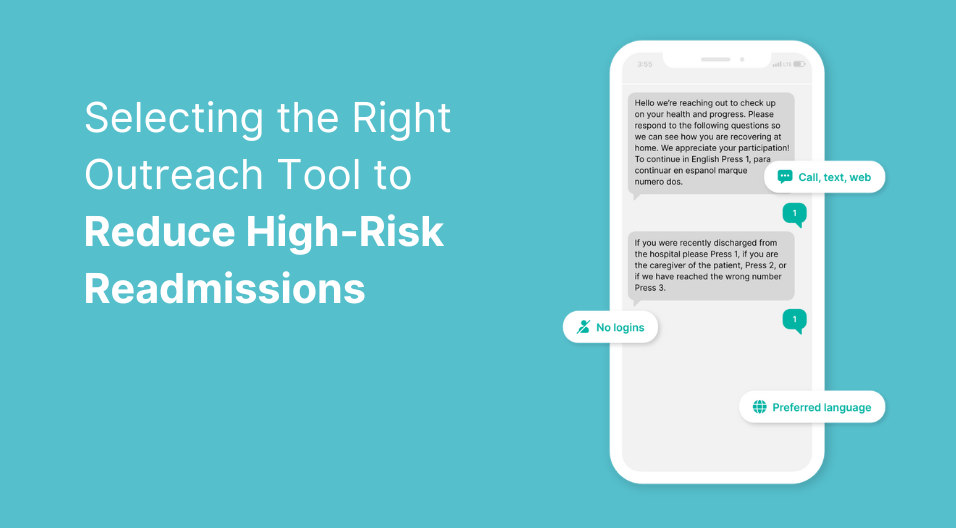In today’s digital era, assessing patient sentiment is gaining popularity as a valuable research tool across industries. This is particularly true in healthcare, as patients’ tend to have strong feelings about their experiences. Each interaction with a healthcare organization triggers a response — positive, negative or neutral. This makes sentiment analysis highly effective in improving communication and optimizing the patient experience. With a better understanding of what patients are feeling, healthcare organizations can focus improvement efforts on factors that impact patients most, build empathy across front-line staff, and share positive wins with staff.
How does Patient Response Analysis work?
Patient Response Analysis is the process of analyzing patient responses and comments to understand what they are thinking and feeling. Free-text and structured responses gathered during patient rounds contain key insights into your patient populations’ experience of your healthcare organization. Patients have the opportunity to comment on topics that aren’t covered in a standard multiple-choice rounding response.
Once these comments are captured, CipherHealth’s Patient Rounding Response Analysis assigns sentiment by leveraging Natural Language Processing (NLP) to score them and understand the emotional leaning of the comment. NLP draws these conclusions for care providers, so they don’t have to manually review the results and try to infer what the patient is feeling.
The tool identifies the top questions that result in strong positive and negative responses from free-text as well as structured responses, providing a window into new and emerging trends in patient experience.
In addition, providers can view and use this information in advance of rounding on the patient to set the tone for the conversation and more precisely address the “opportunity areas” identified by the responses. This valuable data can then be used to help improve patient outcomes in the future.
What problems does Patient Response Analysis address?
More and more, we know the limitations of HCAHPS surveys — they are static in nature and timeliness is an issue. Patient data gathered may be obsolete by the time it is analyzed, highlighting the need for supplementary ways to gain a more comprehensive understanding of the patient experience while in-care.
Analyzing the sentiment in responses directly addresses this, and other problems, by harnessing digital technology to “hear the voice” of the patient during their hospital stay.
When it comes to patient data analysis, it would be challenging and nearly impossible for staff to view and extract meaning from thousands of free-text comments. For instance, Nurse and Patient Experience leaders preparing for meetings would struggle to discern overarching themes from positive or negative feedback. The ability of healthcare professionals to identify critical areas of focus might remain elusive without a systematic approach.
CipherHealth’s Patient Rounding Response Analysis report utilizes NLP technology swiftly and accurately determines strengths and opportunities within patient comments, enabling healthcare leaders to derive valuable insights at scale.
Deliver more personalized care with Patient Rounding Response Analysis
When health systems gain a pulse on real-time dynamics of patient interactions, concerns, and satisfaction, they can implement timely interventions, tailor care to individual needs, and enhance the overall quality of care. Even in the face of current industry stressors, from economic contracts to staff shortages, with Sentiment Analysis providers can:
Reduce administrative burden:
Effortlessly report on patient sentiment throughout your organization by leveraging advanced text analytics tools. Staff are freed from the timely tasks of reviewing and analyzing free-text responses to rounding questions. CipherInsights Advanced Dashboards keeps track of patient sentiment trends with alerts and scheduled delivery.
Gain a deeper understanding of the patient experience:
NLP technology identifies responses as positive or negative by analyzing words in context in order to determine the overall sentiment of the response. Providers can see which questions garner the top positive and negative responses to identify strengths and opportunities. Further, they can drill into top positive and negative keywords as well as use filters such as the date a round was performed or the rounding script.
Inform initiatives:
Nurse and Patient Experience Leaders can explore topics and issues that aren’t evident from existing rounding scripts. They can use uncovered trends to refine scripts and inform other patient experience initiatives, while focusing improvement efforts on factors that impact patients the most.
Conclusion
In this competitive landscape, meeting patient expectations is just the beginning. Natural language processing in healthcare combined with analyzing patient sentiment has emerged as a transformative solution, providing health systems with a direct line to actionable insights from patients themselves. Providers can fine-tune care, deliver personalized experiences, and earn patient loyalty. Moreover, beyond its current applications, analyzing patient responses has the potential to transform proactive care, allowing health systems to anticipate patient needs, shape strategies, and usher in a new era of patient-centered care.









